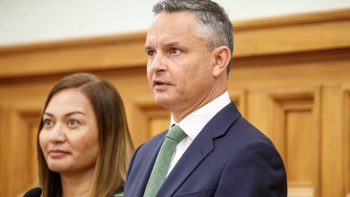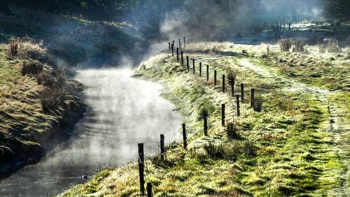This morning’s twin Hawke’s Bay jolts struck in an area well-known for seismic activity – and may have been linked to a deep-seated, slow-burning earthquake that’s been unfolding beneath the North Island for months.
Scientists are this afternoon assessing the possible drivers behind this morning’s widely felt shakes at Pōrangahau, which began with a 24km-deep magnitude 5.9 quake that hit at 10.16am, and a 5.4 tremor that struck minutes later, at a slightly shallower depth.
A third quake, measuring 3.9, occurred at 10.21am, centred about 10km west of the coastal township.
More than 20 other such aftershocks have since been recorded by GeoNet.
“We’d definitely expect ongoing aftershocks, which could be of a ‘felt’ size, over the next weeks to months,” GNS Science seismologist Dr Katie Jacobs said.
“And we know earthquakes tend to cluster more in this region than in others, which may also increase the likelihood of felt aftershocks.”
While scientists haven’t yet established the quakes’ focal mechanism – or their specific faulting type – they likely stemmed from the ongoing “subduction” of the Pacific Plate beneath the Australian Plate, westward under the North Island.
This intersection of plates is marked by the sprawling Hikurangi Subduction Zone: potentially New Zealand’s largest earthquake and tsunami hazard.
It was still unclear if the main quake struck along the main plate boundary fault – called the Hikurangi megathrust - or within the crust, just above or below the plate boundary.
“It’s difficult to attribute specific drivers to an individual earthquake, but we obviously know this area is quite active, being on the subduction zone,” Jacobs said.
“And we know this region, in particular, seems to be a focus for some of that activity.”
/cloudfront-ap-southeast-2.images.arcpublishing.com/nzme/4OUXNHJES4D6SWRM5BND7MVI4U.jpg)
The Hikurangi Subduction Zone marks the margin where the Pacific Plate dives - or subducts - westward beneath the North Island. Image / GeoNet
GNS geophysicist Dr Laura Wallace said swarms of moderate to large earthquakes had been observed at Pōrangahau in the past: one in 2011 included more than 30 within a few months.
“But the two events today were some of the larger ones we’ve seen in the last 10 years or so.”
Victoria University geophysicist Professor John Townend said the region was known to experience different types of earthquakes.
“There are some that represent the rubbing of one slab against the other – or the Australian Plate sitting on top of the Pacific Plate and rubbing on it – and others that are more related to the bending of the plate.”
/cloudfront-ap-southeast-2.images.arcpublishing.com/nzme/JOVIUO6QEKF7I5QY2Q4SJVG224.jpg)
The Hikurangi Subduction Zone - which runs from the top of the East Cape to the upper east of the South Island - potentially represents New Zealand's biggest earthquake and tsunami hazard source.
The area also happened to be a hot-spot for mysterious slow-motion earthquakes called “slow-slip events”, which could release pent-up energy over weeks, months or years.
Discovered only in the past two decades, these could produce up to tens of centimetres of displacements along faults.
But because they happened too slowly to be picked up by seismometers – or to be felt by humans – they had to be observed using sensitive GPS equipment measuring the slow movement of land.
In New Zealand, they tended to play out within areas where the subduction zone was transitioning from being “stuck” beneath the southern North Island, to an area where the subduction zone was “creeping” further north, around Gisborne and Hawke’s Bay.
/cloudfront-ap-southeast-2.images.arcpublishing.com/nzme/AHKQM7LRSXU7B2MRAR2RHJ6KEE.jpg)
New Zealand slow-slip quakes play out in an area where the Hikurangi Subduction Zone is transitioning from being "stuck" beneath the southern North Island, to an area where the subduction zone is "creeping" further north, around Gisborne and Hawkes Bay. Image / GeoNet
In November 2016, a magnitude 5 earthquake that struck offshore Pōrangahau was likely caused by a slow slip event that itself had been set off by the Kaikoura quake that month.
More recently, in 2021, a weeks-long episode off the coast of Pōrangahau - and captured in detail by GNS-deployed sensors – likely triggered a 4.2 event near Waipukurau.
Another slow-slip event – linked to a 6.3 quake in Kapiti in February – was still going deep beneath Manawatu and Horowhenua, and it was possible today’s shakes were connected to the same process, Wallace said.
“Sometimes we can get earthquakes like this when we’re not having slow slip, but I’d think that there is a reasonably high likelihood that this could be related to the Manawatu slip event that’s ongoing.”
The quakes came when Jacobs, Wallace and other scientists were investigating seismicity in the region, and its relationship with slow-slip processes and subduction dynamics.
Take your Radio, Podcasts and Music with you









